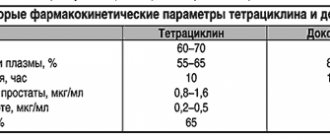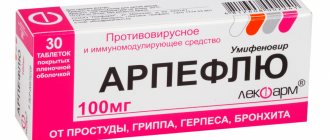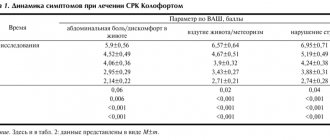Home | About us | Delivery | Advertisers | Login | Registration
Delivery on Sundays and holidays does not work!
- Medicines
- dietary supplementsVitamins
- Categories from A to Z
- Brands from A to Z
- Products from A to Z
- Medical equipment
- beauty
- Child
- Care
- Honey products appointments
- Herbs and herbal teas
- Medical nutrition
- Journey
- Making medicinesStock
Pharmacy online is the best pharmacy in Almaty, delivering medicines to Almaty. An online pharmacy or online pharmacy provides the following types of services: delivery of medicines, medicines to your home. Online pharmacy Almaty or online pharmacy Almaty delivers medicines to your home, as well as home delivery of medicines in Almaty.
my basket
Apteka84.kz is an online pharmacy that offers its customers medicines, medicinal and decorative cosmetics, dietary supplements, vitamins, baby food, intimate products for adults, medical equipment and thousands of other medical and cosmetic products at low prices. All data presented on the Apteka84.kz website is for informational purposes only and is not a substitute for professional medical care. Apteka84.kz strongly recommends that you carefully read the instructions for use contained in each package of medicines and other products. If you currently have any symptoms of the disease, you should seek help from a doctor. You should always tell your doctor or pharmacist about all the medicines you take. If you feel you need further help, please consult your local pharmacist or contact our GP online or by telephone.
© 2022 Pharmacy 84.
Doxycycline capsules 100 mg No. 10
Compound
Active substance: doxycycline hydrochloride (in terms of doxycycline) - 0.1 g. Excipients: potato starch, calcium stearate, powdered sugar.
Pharmacokinetics
Pharmacokinetics: Absorption is fast and high (about 100%). It has a high degree of lipid solubility and low affinity for calcium binding.
After oral administration of 200 mg, the time to reach the maximum concentration is 2.5 hours, the maximum concentration is 2.5 mcg/ml, 24 hours after administration - 1.25 mcg/ml. Communication with plasma proteins is 80-90%.
Penetrates well into organs and tissues, 30-45 minutes after oral administration it is found in therapeutic concentrations in the liver, kidneys, lungs, spleen, bones, teeth, prostate gland, eye tissues, pleural and ascitic fluids, bile, synovial exudate, exudate maxillary and frontal sinuses. Penetrates poorly into the cerebrospinal fluid (10-20% of the plasma level). Penetrates the placental barrier and is detected in breast milk.
Metabolized in the liver 30-60%. The half-life is 16-24 hours. With repeated administrations, the drug may accumulate. Accumulates in bone tissue. Forms insoluble complexes with calcium in bones and teeth.
It is excreted in bile, where it is found in high concentrations. Subject to enterohepatic recirculation, excreted in feces (20-60%), 40% of the dose taken is excreted by the kidneys in 72 hours (of which 20-50% is unchanged), in severe chronic renal failure - only 1-5% . In patients with renal impairment or azotemia, the gastrointestinal tract is an important route of elimination.
Indications for use
- Infectious and inflammatory diseases caused by sensitive microorganisms: respiratory tract infections (pharyngitis, acute and chronic bronchitis, tracheitis, bronchopneumonia, lobar pneumonia, lung abscess, pleural empyema),
- infections of the ENT organs (otitis media, tonsillitis, sinusitis, etc.),
- infections of the genitourinary system (cystitis, pyelonephritis, prostatitis, urethritis, urethrocystitis, urogenital mycoplasmosis, endometritis, endocervicitis, acute orchiepididymitis, gonorrhea),
- infections of the biliary tract and gastrointestinal tract (cholecystitis, cholangitis, gastroenterocolitis, bacterial dysentery, traveler's diarrhea),
- infections of the skin and soft tissues (cellulitis, abscesses, furunculosis, panaritium, infected burns, wounds, etc.),
- infectious eye diseases, syphilis, yaws, yersiniosis,
- legionellosis, rickettsiosis, chlamydia of various localizations (including prostatitis and proctitis), Q fever, rocky mountain spotted fever, typhus (including typhus, tick-borne relapsing), borreliosis, bacillary and amoebic dysentery, tularemia, cholera, Lyme disease (stage I), actinomycosis, malaria, leptospirosis, trachoma, psittacosis, psittacosis, granulocytic ehrlichiosis, whooping cough, brucellosis, osteomyelitis, sepsis, subacute septic endocarditis, peritonitis.
- Prevention of postoperative purulent complications, malaria caused by Plasmodium falciparum, during short-term travel (less than 4 months) to territories where strains resistant to chloroquine and/or pyrimethamine-sulfadoxine are common.
Contraindications
Hypersensitivity, porphyria, severe liver failure, leukopenia, pregnancy II-III trimester, lactation period, childhood (up to 8 years - the possibility of the formation of insoluble complexes with calcium and deposits in the bone skeleton, enamel and dentin of teeth).
Directions for use and doses
Orally, in adults and children weighing more than 45 kg, the average daily dose is 0.2 g on the first day (divided into 2 doses - 0.1 g 2 times a day), then 0.1 g / day (in 1-2 doses). For severe infections, especially chronic infections of the urinary system - 200 mg/day throughout the entire period of therapy.
When treating gonorrhea, one of the following regimens is prescribed: acute uncomplicated urethritis - a course dose of 0.5 g (1 dose - 0.3 g, the next two - 0.1 g at an interval of 6 hours) or 0.1 g / day until complete cure (in women) or 0.1 g 2 times a day for 7 days (in men), for complicated forms of gonorrhea, the course dose is 0.8-0.9 g, which is distributed over 6-7 doses (0.3 g - 1 dose, then with an interval of 6 hours for 5-6 subsequent ones).
When treating syphilis - 0.3 g/day for at least 10 days (orally or intravenously).
For uncomplicated infections of the urethra, cervix and rectum caused by Cl.trachomatis, 0.1 g is prescribed 2 times a day for at least 7 days.
Infections of male genital organs - 0.1 g 2 times a day for 4 weeks.
Treatment of malaria resistant to chloroquine - 0.2 g / day for 7 days (in combination with schizontocidal drugs - quinine), prevention of malaria - 0.1 g 1 time per day 1-2 days before the trip, then daily during the trip and during 4 weeks after return, children over 8 years old - 0.002 g/kg 1 time per day.
Travelers' diarrhea (prevention) - 0.2 g on the first day of the trip (for 1 dose or 0.1 g 2 times a day), then 0.1 g 1 time a day during the entire stay in the region (no more than 3 weeks).
Treatment of leptospirosis - 0.01 g orally 2 times a day for 7 days, prevention of leptospirosis - 0.02 g once a week during stay in a disadvantaged area and 0.02 g at the end of the trip.
Prevention of infections after a medical abortion - 0.1 g 1 hour before the abortion and 0.2 g 30 minutes after.
Maximum daily doses for adults are up to 300 mg per day or up to 600 mg per day for 5 days for severe gonococcal infections.
In children 9-12 years old with body weight up to 45 kg, the average daily dose is 0.004 g/kg on the first day, then 0.002 g/kg per day (in 1-2 doses). For severe infections, 0.004 g/kg is prescribed every 12 hours.
In the presence of severe liver failure, a reduction in the daily dose of doxycycline is required, since this gradually accumulates in the body (risk of hepatotoxicity).
Storage conditions
In a place protected from light, at a temperature not exceeding 25°C. Keep out of the reach of children.
Best before date
4 years. Do not use after expiration date.
special instructions
To prevent local irritating effects (esophagitis, gastritis, ulceration of the gastrointestinal tract), it is recommended to take it during the daytime with plenty of liquid and food.
Due to the possible development of photosensitivity, it is necessary to limit insolation during treatment and for 4-5 days after it.
With long-term use, periodic monitoring of the function of the kidneys (CK), liver, and hematopoietic organs is necessary.
It can mask the manifestations of syphilis, and therefore, if a mixed infection is possible, monthly serological analysis is necessary for 4 months.
Prescription during the development of teeth can cause irreversible changes in their color.
A false increase in the level of catecholamines in urine is possible when they are determined by the fluorescent method. When examining a biopsy of the thyroid gland in patients who have been receiving doxycycline for a long time, dark brown staining of the tissue in microslides is possible without affecting its function.
The experiment found that doxycycline can cause a toxic effect on fetal development - delayed skeletal development.
Description
Antibiotic, tetracycline.
Pharmacodynamics
Semi-synthetic tetracycline, a broad-spectrum bacteriostatic antibiotic derived from metacycline. Penetrating into the cell, it acts on intracellularly located pathogens. Inhibits protein synthesis in the microbial cell by disrupting the connection of transport aminoacyl-RNA with the 30S subunits of the ribosomal membrane. Does not affect bacterial cell wall synthesis.
Highly sensitive to it: gram-positive microorganisms
Staphylococcus spp. (including Staphylococcus aureus, Staphylococcus albus), Streptococcus spp. (including Streptococcus pneumoniae), Clostridium spp., Listeria spp., and gram-negative microorganisms: Neisseria gonorrhoeae, Neisseria meningitidis, Haemophilus influenzae, Klebsiella spp., Entamoeba histolytica, E.coli, Shigella spp., Enterobacter, Salmonella spp. ., Pasterella spp., Bacteroides spp., Psyttacosis spp., Treponema spp. (including strains resistant to other antibiotics, for example, modern penicillins and cephalosporins). The most sensitive are Haemophilus influenzae (91-96%) and intracellular pathogens.
Side effects
From the nervous system: increased intracranial pressure (anorexia, vomiting, headache, papilledema), toxic effects on the central nervous system (dizziness or ataxia).
From the digestive system: nausea, diarrhea, constipation, glossitis, dysphagia, esophagitis (including erosive), gastritis, ulceration of the stomach and duodenum, inflammation in the anogenital area of the perineum, enterocolitis (due to the proliferation of resistant strains of staphylococci).
Allergic reactions: maculopapular rash, skin itching, skin hyperemia, angioedema, anaphylactoid reactions, drug-induced lupus erythematosus.
Blood disorders: hemolytic anemia, thrombocytopenia, neutropenia, eosinophilia,
Other: photosensitivity, superinfection, persistent discoloration of tooth enamel.
Fungal infections (vaginitis, glossitis, stomatitis, proctitis), dysbacteriosis.
Use during pregnancy and breastfeeding
Use during pregnancy (II-III trim.) and lactation is contraindicated.
Interaction
Absorption is reduced by antacids containing aluminum, magnesium and calcium, foods containing calcium (milk, cottage cheese), iron supplements, sodium bicarbonate, magnesium-containing laxatives, cholestyramine and colestipol, so their use should be separated by an interval of 3 hours.
Due to the suppression of intestinal microflora, it reduces the prothrombin index, which requires dose adjustment of indirect anticoagulants.
When combined with bactericidal antibiotics that disrupt cell wall synthesis (penicillins, cephalosporins), the effectiveness of the latter decreases.
Reduces the reliability of contraception and increases the frequency of breakthrough bleeding while taking estrogen-containing oral contraceptives.
Ethanol, barbiturates, rifampicin, carbamazepine, phenytoin and other stimulants of microsomal oxidation accelerate the metabolism of doxycycline.
Concomitant use of methoxyflurane increases the risk of fatal nephrotoxicity.
The simultaneous use of retinol increases intracranial pressure.
Pharmacodynamics
Active against gram-positive cocci (S.aureus), coagulase-negative staphylococci, streptococci (S.pneumoniae, S.pyogenes - group A, S.agalactiae - group B, S.viridans, strains of A.israelii, B.anthracis, L. monocytogenes ), gram-negative cocci (N.meningitidis, N.gonorrhoeae, B.catarrhalis), rods (Bordetella, Brucella spp., Calymmatobacterium granulomatis, Campylobacter spp., F.tularensis, H.influenzae, H.ducreyi, Legionella, P.multocida , Yersinia spp.), Vibrionaceae strains (V.cholerae, V.parahaemolyticus), other microorganisms (Helicobacter pylori, Chlamydia spp., Rickettsia spp., Coxiella spp.), spirochetes (Borrelia burgdorferi, Leptospira interrogans, Treponema pallidum), Mycobacterium spp., Mycoplasma pneumoniae, Ureaplasma urealyticum, as well as protozoa (Plasmodium falciparum, Entamoeba histolytica).


